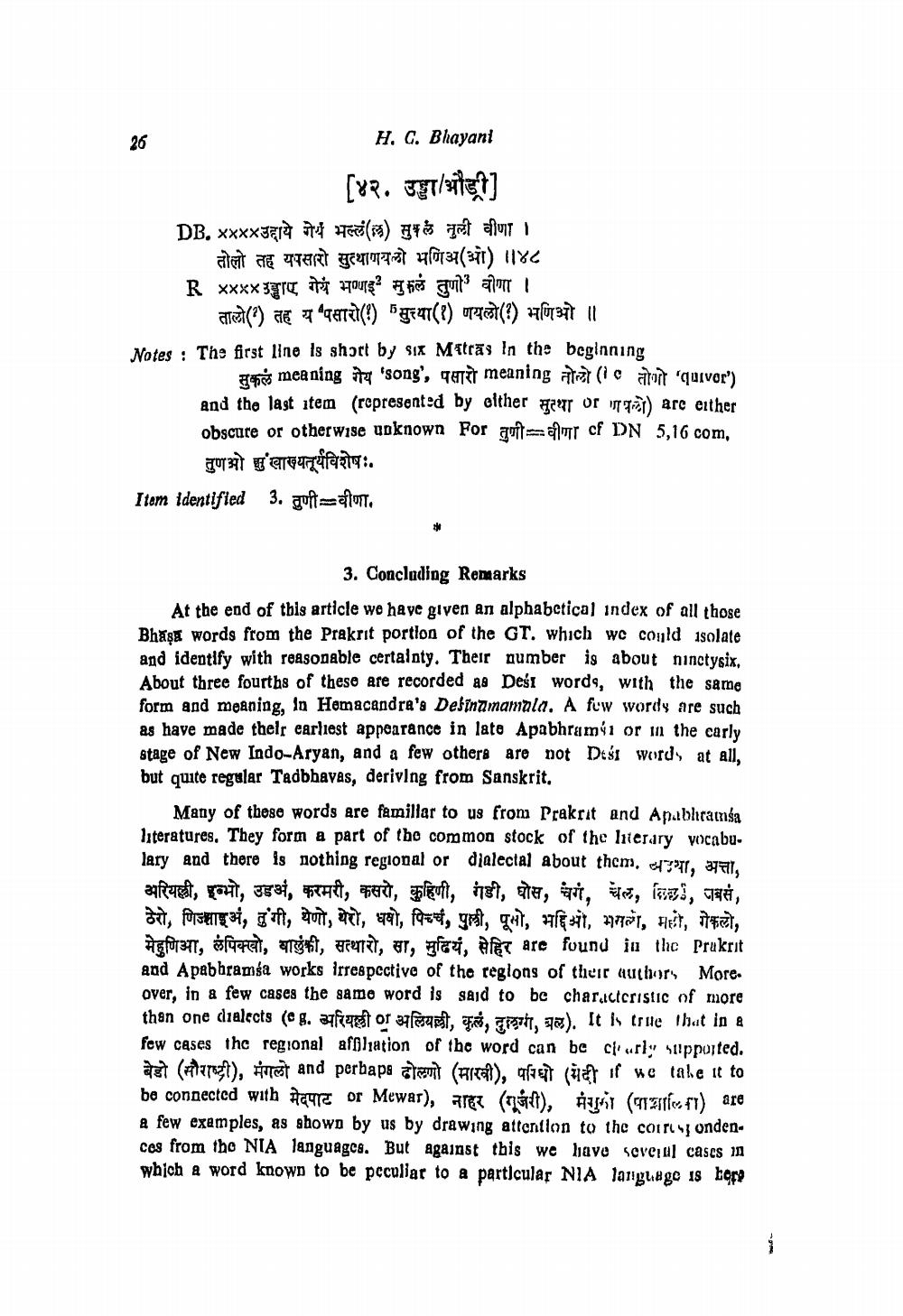________________
H. G. Bhayanti
[४२. उड्डा औडी] DB. xxxxउहाये गेयं भल्ल(ल) सुक्ल नुली वीणा ।
तोलो तह यपसारो सुत्थाणयलो भणिअ(ओ) ॥४८ R xxxx उड्डाए गेयं भण्णइ सुफलं तुणो वीणा ।
तालो(२) तह य पसारो(?) सुत्त्या(१) णयलो(?) भणिओ ।। Notes : The first line is short by six Matras In the beginning
सुकलं meaning गेय 'song', पसारो meaning तोलो (10 तोगो 'quiver') and the last item (represented by either per ora ) arc either obscure or otherwise unknown For तुणी-वीणा cf DN 5,16 com,
तुणओ मुखाख्यतूर्यविशेषः. Itam identified 3. तुणी-वीणा.
3. Conclnding Remarks At the end of this article we have given an alphabetical index of all those Bhaşe words from the Prakrit portion of the GT. which we could isolate and identify with reasonable certainty. Their number is about ninctysix. About three fourths of these are recorded as Deśl words, with the same form and meaning in Hemacandra's Definamamala. A few words are such as have made thelr earliest appearance in late Apabhram'ı or in the carly stage of New Indo-Aryan, and a few othera are not Dsr words at all, but quite regular Tadbhavas, deriving from Sanskrit.
Many of these words are famillar to us from Prakrit and Apabhransa literatures, They form a part of the common stock of the literary vocabulary and there is nothing regional or dialectal about them. अध्या , अत्ता.
अरियल्ली, इन्भो, उडअं, करमरी, कसरो, कुहिणी, गडी, घोस, चंग, चल, छि, जबस, ठेरो, णिज्झाइ, तुंगी, थेणो, येरो, धवो, पिच्च, पुल्ली, पूमो, भदिओ, भागलगे, महो, गेकलो, मेडणिआ. लंपिक्खो, यालकी, सत्यारो, सा, मूर्तियं. सेहिर are found in the Prakrit and Apabhramsa works Irrespective of the regions of their anchors More. over, in a few cases the same word is said to be characteristic of more than one dialects (eg. अरियाली or अलियली. कलं.दालग अल). Ith trile that in a few cases the regional affliation of the word can be cirly stlpported. बेडो (सौराष्ट्री), मंगलो and perhapa ढोलगो (मारवी), परिधो (मेदी if we take it to be connected with मेदपाट or Mewar), नाहर (गूजरी), मंगुमी (पामालिया) are a few exemples, as shown by us by drawing attention to the courts ondences from the NIA languages. But against this we have several cases in which a word known to be peculiar to a particular NIA language is bore




